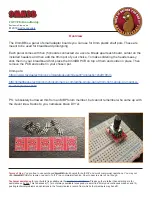
10
3 General description
The DHZ is a digital single or dual-tariff meter for measuring positive and negative active
energy in 2-, 3- and 4-wire networks. The tariff switching is controlled via an external
control input.
The applications for the DHZ are primarily the recording of energy data in industrial and
building technology, switchgear construction and use in the energy supply sector.
The design of the meter enables space-saving installation (only 6 TE wide) and
connection via cable links or busbars.
The wall model of the DHZ features a configurable transformer ratio for recording the
actual energy consumption. The transformer ratio can be set directly on the meter via the
control button (only on the non-calibrated model).
The energy consumption values are displayed as an 8-digit number on an LCD.
The energy consumption data can also be output via a secondary or primary impulse
output and/or via an electric interface (M-Bus, LON or RS485). The impulse constant and
impulse length are configurable for the secondary impulse output; they have fixed values
for the primary impulse output.
The DHZ is available in accuracy class 1 or 2 according to IEC 62053-21 or accuracy
class B or A according to DIN EN 50470-1, -3.











































